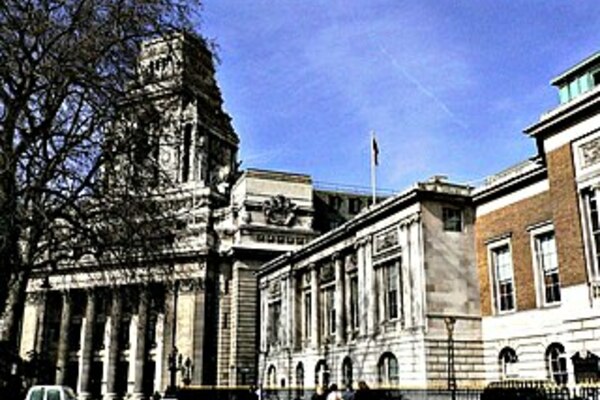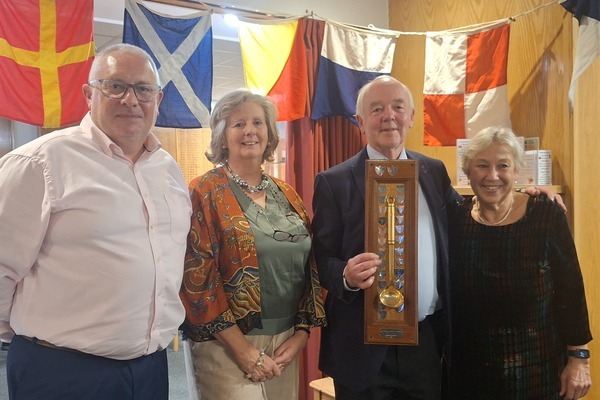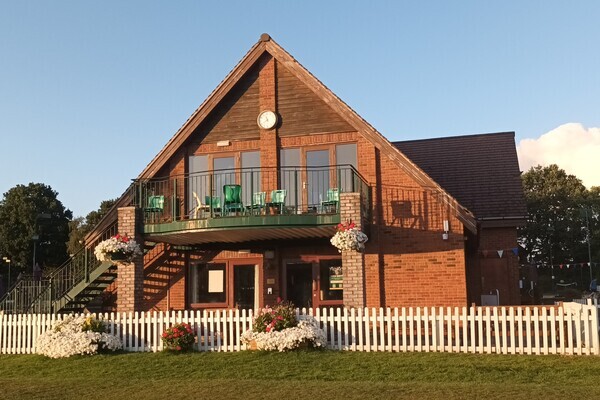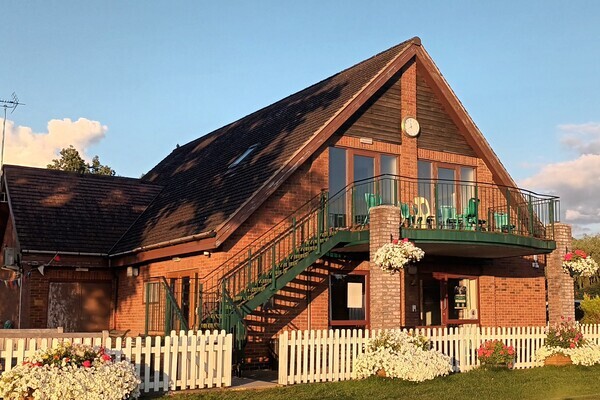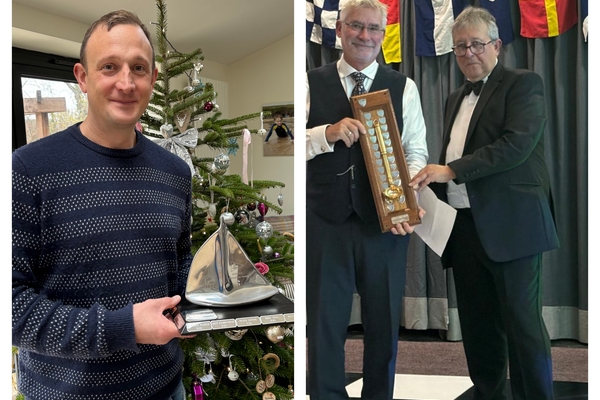Our trip to London was inspired by last year's Speaker Evening with Captain Willian Wells, a retired Trinity House licensed pilot. We booked a coach and a date, which had to be a Monday. Nevertheless all 25 places were taken up. Our coach dropped us close to an iconic London landmark and one of the most significant ships in modern naval history, HMS Belfast, which is moored permanently in the Thames close to Tower Bridge.
The weather was grey and wet so once we had collected our audio guides, the group dispersed to explore what it was like to be part of the crew of aboard this great warship of the Royal Navy during the second world war. Several headed straight for the café.
HMS Belfast was launched just over 80 years ago and quickly became part of the British naval blockade. Within a few months she was so badly damaged by a magnetic mine that she was in danger of being scrapped. We saw photographs of the severe explosion damage that resulted in the ship being buckled and bent in the middle. Three years later she returned to active service after an extraordinary and extensive refit, including the latest technology and radar systems
On deck we could see how a reconnaissance aircraft was literally catapulted along a runway to take off. On each side of the ship we could see the seat positions for a ‘gunner’ , the racks for ammunition, and the controls in front of him. Some of us climbed into the cramped space of the Gun Turret to see and hear what it was like. Often surprisingly quiet as they listened for their cue to initiate a firing sequence.
We could sit in the Captain’s chair, but there was no helm on the Bridge. The wheel we discovered well below deck where the helmsman would steer blind according to relayed instructions.
Below decks, and there’s nine of them, we discovered machine workshops, engine and boiler rooms. The workplace of these sailors looking more like noisy engineering factories. The stairways are steep like ladders, bet they often slid down rather than climb down backwards!
Some 800 crew had to be fed - seems chicken and chips was on the menu. There was a line of sinks for washing, showers and popular music was relayed for relaxation time, but traditional hammocks saved on space for sleeping and there was limited provision for anyone sick or requiring dentistry.
This was history within the lifetimes of our own family members. What we could imagine was helped by the recorded voices and images of the men who had served aboard HMS Belfast.
After lunch, we walked over London Bridge to Trinity House which is just a short distance away on the north side of the river. We assembled in the entrance hall, considering it a privilege to be within the hallowed walls of this 500 year old institution which was granted a Royal Charter in 1514. At the allotted hour we were welcomed by our Guide and the tour commenced. We were entertained and enthralled by information and stories about the building, it’s history and artefacts such as clocks, models and artworks. It’s even possible to book a trip on board THV Patricia, though it’s a little expensive for a rally! We learnt more about the wide ranging areas of work, not only lights and buoys, safety and licensed pilotage, alms houses for the needy of retired sailors, but ongoing support strategies for other initiatives including the RNLI and the Jubilee Sailing Trust which is currently our own nominated Commodore’s charity. Looking to the future there's already an apprenticeship scheme, scientific advances and encouraging plans to attract more young women and men to the modern Maritime Industry.

